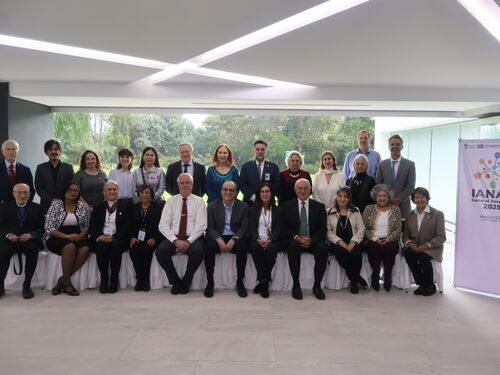Food and Nutrition Board Marks 80 Years of Advising the Nation
Feature Story
Last update March, 19 2020
Symposium participants examine what climate change, obesity, and personalized medicine mean for nutrition in the future
From military rations, to nutrition labels on packaged foods, to the meals and items provided in school cafeterias and vending machines — the leadership and advice of the Food and Nutrition Board (FNB) of the National Academies has impacted almost every individual in the United States.
In 1940, in the midst of World War II, the Academies began convening experts to advise the U.S. government on the nutritional needs of the military and civilians. Eighty years later, the FNB’s impact has extended far beyond its military health roots. Among its signature accomplishments, the FNB created the Dietary Reference Intakes (DRIs). The DRIs not only inform how much vitamin C or sodium Americans and Canadians should consume; federal programs like the National School Lunch and Breakfast Programs and the Special Supplemental Nutrition Program for Women, Infants, and Children (WIC) have mandates to align with the DRIs.
In recognition of its 80th anniversary, the FNB held a symposium on February 28, 2020, at which speakers reflected on the board’s domestic and international impact and identified current and future challenges in food and nutrition that the board is well-poised to address.
“When the Food and Nutrition Board started, it was worried about inadequate nutrition, but today, it’s worried about overconsumption,” said former FDA Commissioner David Kessler in a keynote speech.
Since its 2005 report, Preventing Childhood Obesity: Health in the Balance, the FNB has been “telling the world obesity is a societal issue — and what to do about it,” said FNB chair Shiriki Kumanyika, who is a research professor at Drexel University’s Dornsife School of Public Health. FNB’s obesity-related reports and workshops have recommended community, state, and national level strategies to increase healthy eating and physical activity. With half the U.S. population projected to be obese by 2030, the FNB’s work is particularly urgent.
Reimagining the Dietary Reference Intakes (DRIs) in an Age of Chronic Disease
Obesity and the chronic diseases that come with it affects how people metabolize nutrients, and therefore, nutrient requirements. The DRIs were initially developed for healthy people, but they may need to reflect the reality that 50 percent of the U.S. population has a chronic disease, added Kessler.
Janet King, former FNB chair and professor emerita, University of California Berkeley, said the FNB should aspire to have the DRIs play a global role. “What if we could recommend a universal basic diet, but do it from the perspective of preventing disease and deficiency?”
Personalizing Health and Nutrition
A food regimen might work for one person, but not for another, said Cheryl Anderson, professor, University of California, San Diego, who discussed the concept of “eating for your genotype.”
An influx of data on the factors that affect metabolism (such as sleep, stress, and exercise) — coupled with machine learning — has ushered in an era of personalized nutrition. The field is getting closer to being able to provide guidance on what an individual diet should be, but we’re not quite there yet, said Anderson.
“One barrier to progress is underrepresentation in research,” said Anderson, who called for the nutrition science community to take into account participants’ race, ethnicity, gender, and age.
Applying a Climate Change Lens to Food and Nutrition Policy
The National Academies and the Food and Nutrition Board are working to address issues around climate change and population growth, which has implications for food availability, cost, and quality.
“With our growing population, we have an increased demand for food, but less capacity to produce it,” cautioned Patrick Stover, vice chancellor and dean for agriculture and life sciences at Texas A&M University. “The U.S. loses about 175 acres of farmland every hour, largely because of urban and suburban expansion.”
The food and nutrition policies of the future will need to assess the full range of issues affecting population health, including food safety, availability, and diet quality.
It’s a daunting task and the questions will grow more complex. But the FNB is ready to live up to its reputation as a trusted adviser — in the next 80 years and beyond.
The FDA’s Kessler left everyone with final words of advice. “In times of public health crisis, let the politicians move to the background. Let your scientists lead the way.”
Resources



